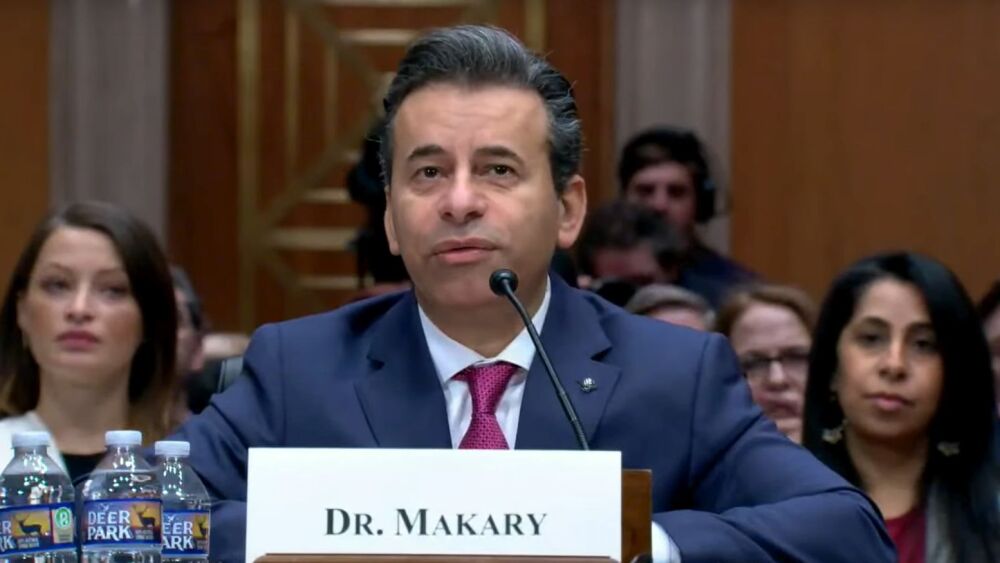Another COVID-19 vaccine candidate recently entered the races. The difference – this one is a live attenuated (weakened) virus expressing the coronavirus’s signature spike protein on its surface. And it’s delivered nasally, not a shot.
Another COVID-19 vaccine candidate recently entered the races. The difference – this one is a live attenuated (weakened) virus expressing the coronavirus’s signature spike protein on its surface. And it’s delivered nasally, not a shot.
“COVID-19 vaccine development will be more of a marathon than a sprint,” Martin Moore, Ph.D., co-founder and CEO of Meissa Vaccines, told BioSpace. “A live attenuated vaccine may not be first-in-class, but their historically high efficacy could make it the best-in-class.”
ad
Moore spoke with BioSpace about live attenuated vaccines, interim data from their RSV vaccine candidate, and how they are building on their RSV vaccine platform to create a COVID-19 vaccine.
Live attenuated vaccines (LAVs)
Think about it – what is the best way to generate an effective vaccine against a virus? Mimic natural infection as close as possible by giving someone a form of the virus that can’t make them sick.
This is just what live attenuated vaccines (LAVs) do. LAVs contain a weakened form of a virus that is given to someone the same way that natural infection occurs, such as via a nasal spray (intranasally) for the flu LAV. This provokes all aspects of the immune system: innate local (mucosal), cell-based, and systemic antibody (humoral) responses.
Once inside the body, the weakened virus can replicate at a low level for a few days, but it is easily cleared by the immune system. After just one or two doses, the weakened virus produces strong, long-lasting immune responses that are almost as good as the full-strength virus that causes sickness.
By mimicking infection, LAVs generally provide more robust immune responses compared to injected non-living vaccines that typically only induce the antibody-based immune response. That’s why you usually have to get booster shots of injected vaccines.
This concept is hardly new. In fact, LAVs are already available against multiple viruses, including measles, mumps, rubella (as the combined MMR vaccine); rotavirus; and chickenpox.
“The oral polio vaccine is a great example of a live attenuated vaccine,” Moore said. “It’s low cost, able to be given widespread, and easy to administer with no needles or adjuvants needed. From a manufacturing standpoint, it’s also inexpensive and pretty easy to produce.”
Advantages and limitations of live attenuated vaccines (LAVs)
| Advantages | Limitations |
| 1-2 doses | Can’t be given to immunocompromised people |
| Lower cost | Need to be refrigerated |
| Administered through the same route as natural infection (intranasal, oral, etc.) | Genetic stability of virus is important for safety |
| No needles or adjuvants needed | Strict safety levels to adhere to during development |
| Induces both cellular and humoral (antibody) immune responses | Need to balance attenuation with potency/immunogenicity |
As you can imagine, there is an inherent risk in using the actual (albeit weakened) virus for a vaccine. Viruses constantly mutate, so the weakened virus used in the vaccine has a chance of regaining its ability to be infectious and cause disease.
Creating a LAV is a balancing act – the virus must be weakened enough to significantly reduce the risk of it mutating to become infectious, but still close enough to the full-strength virus to create a similar immune response.
“The trick is balancing attenuation with immunogenicity,” Moore commented.
Moore explained that if a virus is attenuated based on one or two gene mutations, the virus could revert to being infectious in the vaccine recipient and they can shed live virus, spreading it to others. This is the worst-case scenario and why there are such strict safety standards for vaccines, especially LAVs.
“Safety is critical, there are no cutting corners with safety,” explained Moore. “Coronaviruses, in particular, are prone to genetic recombination, so using a live attenuated coronavirus in a vaccine would run the risk of becoming infectious again. We’ve mitigated this risk by using RSV, which is more genetically stable, as a backbone.”
Building from the foundation of another respiratory vaccine
The backbone of Meissa’s COVID-19 vaccine comes from another vaccine in their pipeline – their respiratory syncytial virus (RSV) vaccine candidate. RSV, a common respiratory virus, usually causes mild cold symptoms; however, infants and the elderly may be hit particularly hard. RSV is infamous for being the culprit behind serious illness and pneumonia in infants less than 1 year old.
To create their intranasal RSV vaccine candidate (called MV-012-968), Meissa genetically engineered RSV to be weakened and safe, yet still potent, by using codon deoptimization.
Codon deopti-what?
Quick genetics review: a codon is a group of three bases in DNA or RNA that encodes a certain amino acid (the building block of proteins). Codons are the genetic code that translates genes into proteins. (Think of bases as the letters of the alphabet, codons as the words, and each gene as a sentence.) There are 64 different codons, but only 20 amino acids that they code for. Almost all amino acids are encoded by multiple codons; some codons for a particular amino acid are used more commonly than the others.
Codon deoptimization is changing the more common codons into the less common codons for the same amino acid throughout a gene. This introduces many ‘silent mutations,’ changes in the genetic code that do not alter the resulting proteins being made.
“This approach to viral genes has been called death by thousands of cuts,” Moore explained. “By using rare codons, codon deoptimization can change the expression efficiency of proteins.”
The rare codons do not have as many amino acid transporters, called transfer RNA (tRNA), so they can slow down the translation process of turning genes into proteins. The slower the gene is translated, the fewer corresponding proteins is made (the lower the protein expression).
“Using codon deoptimization, we’ve downregulated three RSV genes involved in the virus’s ability to inhibit the human immune response to create our attenuated RSV,” said Moore. “This gives us optimized manufacturability, attenuation, and immunogenicity.”
By taking away the virus’s ability to inhibit immune pathways, Meissa is engineering attenuated vaccine strains that produce a solid immune response. This is key for viruses that don’t provide strong immunity to begin with, like RSV or coronavirus.
Their RSV vaccine candidate, which received Fast Track Designation from the FDA in January, is currently in Phase I trials in healthy adults and young children. Previously, it was shown to produce a robust immune response in rats despite being highly weakened. The company recently provided an interim update announcing that initial clinical data showed the vaccine generate an immune response in healthy adults.
There are three main takeaways from the clinical data: the RSV in the vaccine was heavily weakened (as indicated by the lack of viral shedding from the nose); the vaccine prompted an RSV-specific immune reaction in the nose; and the vaccine was reported to be safe and well-tolerated up to 56 days.
“All adults in this study have pre-existing titers of serum neutralizing antibodies systemically,” Moore explained. “All adults have already been infected with RSV previously. Ideally, we want to give our RSV vaccine to RSV seronegative babies so it will produce nasal and humoral immune responses.”
Creating the COVID-19 vaccine candidate
Based off the interim RSV vaccine data, researchers at Meissa thought ‘Could we modify our weakened RSV to create a COVID-19 vaccine?’
“COVID-19 patients don’t seem to have a robust neutralizing antibody response, with lower titers that decrease rapidly over short periods of time,” said Moore. “This is bad news for developing a live attenuated coronavirus-based vaccine – if you weaken the coronavirus further, how are you going to get the immunogenicity needed for a robust immune response?”
You would overcome that issue by deeply understanding the biology of the coronavirus, Moore continued. Unfortunately, coronaviruses are some of the largest RNA viruses on the planet (genetically speaking), making them extraordinarily complex. Fortunately, RSV is not nearly as complex (about half of the size of coronaviruses, genetically), making it much easier to work with.
Using an RSV backbone for the COVID-19 vaccine also makes a lot of sense given the similarities between the two viruses: they are both respiratory viruses and inhibit the innate immune response during infection.
To create their COVID-19 vaccine, Meissa removed the surface proteins of their weakened RSV and replaced them with the coronavirus spike protein. The RSV-coronavirus hybrid virus was optimized to express the spike protein. This ‘chimeric’ virus has the best of both worlds – the established, weakened RSV construct and high expression of the coronavirus spike protein. Because this vaccine is RSV-based, they completely avoided the slippery genetic slope of using a weakened coronavirus.
Meissa plans to submit an IND later this year and anticipates a Phase I trial of their COVID-19 LAV to begin at the end of 2020. Moore said that the company is working on scaling up manufacturing now so that the COVID-19 vaccine could be in a large pivotal study in 2021.
Other COVID-19 vaccines in development
We all know that the COVID-19 vaccine development pipeline is becoming quite the rapid race. As of July 8, 2020, there were 165 vaccines in development, according to Bio. You can follow development of the most famous vaccine candidates using the New York Times’ “Coronavirus Vaccine Tracker” tool, which is periodically updated with new information.
Out of all the other COVID-19 vaccines being developed, only a few use live attenuated viruses. “There aren’t enough LAV candidates in the broader pipeline, which is dominated by nonreplicating vaccines,” commented Moore.
In late January, Yuen Kwok-Yung, Chair of Infectious Diseases at the University of Hong Kong, said his lab modified an intranasal flu vaccine they had previously developed so that the influenza virus also expressed coronavirus surface antigens. (There hasn’t seemed to be any updates about that vaccine’s progress.)
Another company, Codagenix, Inc., is using codon deoptimization (like Meissa) to create vaccines against respiratory diseases like RSV and influenza. They’ve also jumped into the COVID-19 vaccine race with their candidate, called CDX-CoV. They successfully created the vaccine in mid-June and it is still in preclinical studies.
“Only 5-7 percent of Americans have been infected and natural immunity doesn’t seem to be that robust, so we could be in for quite a slog,” Moore concluded.





